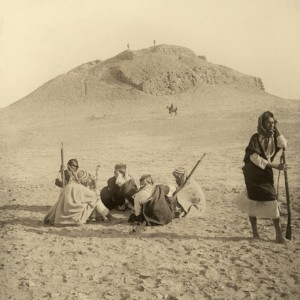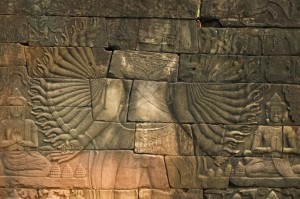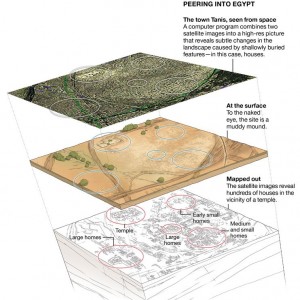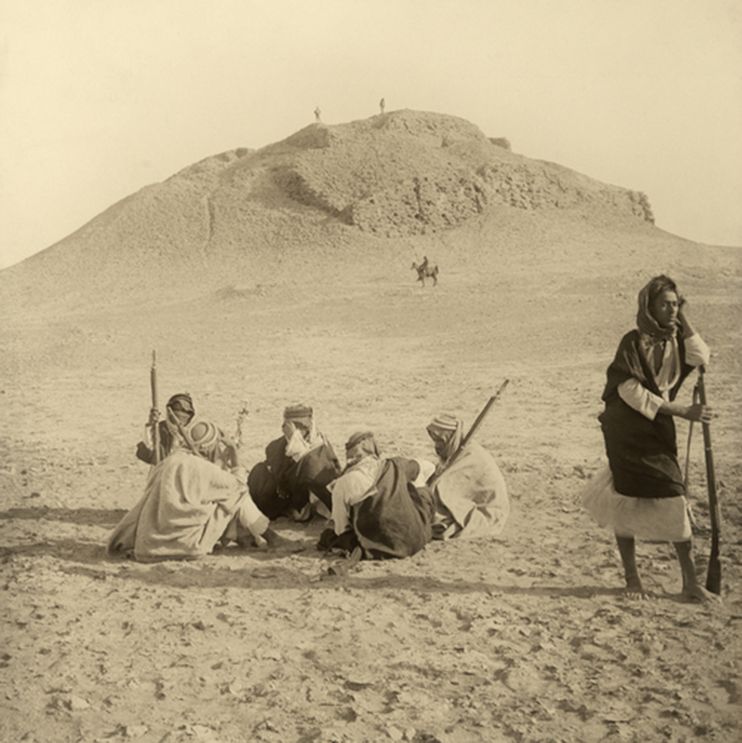 Looting of Ancient Artifacts Continues in the Near Middle East
Looting of Ancient Artifacts Continues in the Near Middle East
The act of looting has been around since the time of the first creatures to walk the Earth. It is a part of the natural habitat to take something from someone/something else whether it’s over envy, food or protection. This action becomes intensified when living quarters change drastically, In the since of humans, the main cause is war and poverty. Since the near middle east is the birth place of human civilization it is only logical that many wars and looting have taken place in this area. The issue in today’s society is the extreme continuation of this negative ancient habit in countries such as Syria, Egypt, Afghanistan, Iraq and many others in that region. Many of these regions are at war or are having rebellions creating uncivilized actions in which terrorist organizations, regimes and even normal citizens are raiding museums and historical sites to reek the easy profits of ancient relics.
These ancient treasures are fueling the market with unknown parties scooping them away as fast as they come. UNESCO and other international and national agencies are trying to prevent this illicit trafficking, but still the world’s museums are full of objects that many people believe don’t belong there(Stanford 1). As the main focus of the Collier and Moeffler defense group suggests, viewing looting as a product of conflict is not enough to bring these acts to a halt (MacGinty 858). In northern Cambodia, 1998, the site of the ancient Banteay Chhmar temple, a small convoy of military trucks from a rogue militia set up road blocks not allowing anything to pass through. They began excavating the site by dragging near by villagers to work with jackhammers. In only two weeks this 800 year old once preserved site was destroyed with a 98-foot-long section of the wall carted off and sold on the black market. This and other evidence from Iraq and Afghanistan advocate that the smuggling of artifacts or “blood antiquities” network are helping finance terrorism through violent insurgent groups. These looting techniques have all but rose in the past three decades. In 2010, a Red List of Cambodian Antiquities at Risk was established by the International Council of Museums, alerting international law enforcement agencies and customs officials to try and prevent the blood antiquities trade from further flourishing(Pringle 1-4). In the 2011, the revolution of Egypt created more illegal excavations leaving behind, “hundreds of looters’ pits, exposed tombs, destroyed walls and even human remains, including remnants of dismembered mummies and strewn mummy wraps, littering the site like trash,”(Popular Archaeology 2). No longer obtaining permission to work or even enter Egypt Professor and Archaeologist Carol Redmount of U.C. Berkley established a Facebook page dedicated to the attention to the El Hibeh’s Plight in Egypt in an attempt to prevent other sites from this same horrific incident(Popular Archaeology 5). While this and other social media pages did create some media attention and recognition to the problem at hand it was also considered not as big of a deal as it should have been. Many viewed this as “the kid crying wolf” because the same problem happened years earlier after the collapse of Saddam Hussein’s Regime, where looters entered the Iraq National Museum in Baghdad steeling and destroying thousands of artifacts while also damaging the museum. This became a huge international controversy because the United States was informed before war about the security of the objects. American archeologist and other international archaeologists teamed up against the United States through live media coverage by petitioning against the war and blaming the United States for not securing the most infamous museum before the looting took place. Millions of dollars were spent to try to reclaim these artifacts in which was not very successful until “the late spring and summer of 2003 when it became increasingly clear that the events at the museum did not conform to the initial narrative. Most of the missing high-quality artifacts had indeed been hidden in various vaults and locations by the staff. The staff portrayed its deception as necessary to protect the holdings, but some journalist were enraged about the manipulation(Joffe 1-10).” With the manipulation of media, preventive agencies and museums failing to protect the artifacts other actions have to be established before everything is either damaged or carted off to private owners to never be seen again. Since all other approaches have not been panning out maybe it time for other resources and plans to be put into action, for instance, there has been recent research using a Geographic Information System (GIS) for mapping out these illegal excavation sites along with other attempts of taking out the “Janus Point,” of the underground market and also fixing the poverty level of these countries.
These looting techniques have all but rose in the past three decades. In 2010, a Red List of Cambodian Antiquities at Risk was established by the International Council of Museums, alerting international law enforcement agencies and customs officials to try and prevent the blood antiquities trade from further flourishing(Pringle 1-4). In the 2011, the revolution of Egypt created more illegal excavations leaving behind, “hundreds of looters’ pits, exposed tombs, destroyed walls and even human remains, including remnants of dismembered mummies and strewn mummy wraps, littering the site like trash,”(Popular Archaeology 2). No longer obtaining permission to work or even enter Egypt Professor and Archaeologist Carol Redmount of U.C. Berkley established a Facebook page dedicated to the attention to the El Hibeh’s Plight in Egypt in an attempt to prevent other sites from this same horrific incident(Popular Archaeology 5). While this and other social media pages did create some media attention and recognition to the problem at hand it was also considered not as big of a deal as it should have been. Many viewed this as “the kid crying wolf” because the same problem happened years earlier after the collapse of Saddam Hussein’s Regime, where looters entered the Iraq National Museum in Baghdad steeling and destroying thousands of artifacts while also damaging the museum. This became a huge international controversy because the United States was informed before war about the security of the objects. American archeologist and other international archaeologists teamed up against the United States through live media coverage by petitioning against the war and blaming the United States for not securing the most infamous museum before the looting took place. Millions of dollars were spent to try to reclaim these artifacts in which was not very successful until “the late spring and summer of 2003 when it became increasingly clear that the events at the museum did not conform to the initial narrative. Most of the missing high-quality artifacts had indeed been hidden in various vaults and locations by the staff. The staff portrayed its deception as necessary to protect the holdings, but some journalist were enraged about the manipulation(Joffe 1-10).” With the manipulation of media, preventive agencies and museums failing to protect the artifacts other actions have to be established before everything is either damaged or carted off to private owners to never be seen again. Since all other approaches have not been panning out maybe it time for other resources and plans to be put into action, for instance, there has been recent research using a Geographic Information System (GIS) for mapping out these illegal excavation sites along with other attempts of taking out the “Janus Point,” of the underground market and also fixing the poverty level of these countries.
With new discoveries preventative actions can now be put in play to shut down the global black market. Sarah Parcak from the University of Alabama in Birmingham is one of the Archaeologist of the new frontier using the GIS, “To help halt the destruction, Parcak and her colleagues are working on new ways of tracking and monitoring looting. In Egypt, she explains, concentrations of looting holes can be seen from space, and her team is using high-resolution satellite images taken over time to look at changes in looting patterns.Sarah Parcak and her team are not only using satellite imagery to monitor looting from up in space. They’re also collecting images to identify buried landscapes with astonishing precision, thus contributing to archaeological finds. In 2011, relying on infrared satellite pictures, Parcak and her team identified 17 potential buried pyramids, some 3,000 settlements, and 1,000 tombs across Egypt.” This system is creating a tipping point where they can map, monitor and protect both known and unknown sites(Pringle 10). In another effort to stop the looting of these ancient artifacts The University of Glasco, at the Scottish center for Crime and Justice Research, has researchers gathering data on the global black market for a multimillion dollar project dubbed the Trafficking Culture, with members analyzing how traffickers smuggle and launder looted artifacts, and how this can be prevented. “Our project is unique,” says team member Donna Yates, an archaeologist focusing on the antiquities trade in South and Central America. “We are the first academic group to have criminologists, lawyers, and archaeologists all working together.” These researchers traveled to Banteay Chhmar and five other substantially looted temple complexes in Cambodia and talked to nearby villages in hopes of assistance. Through the help of the Elders in the town they were able to track down and talk to people who witnessed or took part in the looting. Because of the religious views of karma many of them gave information about the ringleaders, which lead the team to find a former member of the Khmer Rouge as the next man up the latter. His information gave prices on the antiques they took and also the next link up the chain, the heads of an organized crime ring in Sisophon, in which it was rumored they were the cause of the two-week-long looting of Banteay Chhmar. From there the antiqities were passed to Bangkok, Thailand where the Janus Point was discovered. Janus is a Hindu God who has two different faces, one that gazed down on the criminal world and one that looked up into the world of wealthy collectors and buyers. Surprisingly there are not many steps involved from the looters to the buyers, making it a lot easier than first fathomed illusive black market, proving that with more effort the head of the snake could be cut off hopefully vanquishing the thirst for ancient antiquities(Pringle 4-5). The last effort; which should already have more effort put into it, is the crisis of the Middle East’s economy. The economy from the Middle East is detached from not only the world’s, but also from one another. However, it is a lot more easily said then done, if the blockade on Gaza was vanquished and the sanctions on Iran were demised the economy still would not prevail. “Oil importers need to replace costly fuel subsidies with targeted assistance to the poor and the creation of social safety nets. They also need to ease their dependency on external aid, reduce corruption, and make regulatory changes to encourage private-sector growth. Exporters need to reduce spending and diversify their economies. And both need to shrink their public sectors and modernize their educational systems. The United States and its allies should not only provide advice in overcoming these challenges but also incentivize regional governments to take it. That means working with regional allies that are seeking to diversify and modernize their economies, and coordinating economic aid and tying it to progress on reform, including the political steps necessary to make reforms successful.” Greater economic integration should also be a step by having america and other nations cooperate with wealthy oil producers to invest in the prosperity of their poorer neighbors and offering better access to Western markets, like the European Union (Singh 2-3). By grouping together with organizations such the United Nations Educational, Scientific and Cultural Organization (UNESCO) and other that dedicate time and funds to the prevention of such acts(Looting in the Near Middle east). This process could allow America to lose the world police campaign and help promote long-term peace and stability(Singh 3).
In another effort to stop the looting of these ancient artifacts The University of Glasco, at the Scottish center for Crime and Justice Research, has researchers gathering data on the global black market for a multimillion dollar project dubbed the Trafficking Culture, with members analyzing how traffickers smuggle and launder looted artifacts, and how this can be prevented. “Our project is unique,” says team member Donna Yates, an archaeologist focusing on the antiquities trade in South and Central America. “We are the first academic group to have criminologists, lawyers, and archaeologists all working together.” These researchers traveled to Banteay Chhmar and five other substantially looted temple complexes in Cambodia and talked to nearby villages in hopes of assistance. Through the help of the Elders in the town they were able to track down and talk to people who witnessed or took part in the looting. Because of the religious views of karma many of them gave information about the ringleaders, which lead the team to find a former member of the Khmer Rouge as the next man up the latter. His information gave prices on the antiques they took and also the next link up the chain, the heads of an organized crime ring in Sisophon, in which it was rumored they were the cause of the two-week-long looting of Banteay Chhmar. From there the antiqities were passed to Bangkok, Thailand where the Janus Point was discovered. Janus is a Hindu God who has two different faces, one that gazed down on the criminal world and one that looked up into the world of wealthy collectors and buyers. Surprisingly there are not many steps involved from the looters to the buyers, making it a lot easier than first fathomed illusive black market, proving that with more effort the head of the snake could be cut off hopefully vanquishing the thirst for ancient antiquities(Pringle 4-5). The last effort; which should already have more effort put into it, is the crisis of the Middle East’s economy. The economy from the Middle East is detached from not only the world’s, but also from one another. However, it is a lot more easily said then done, if the blockade on Gaza was vanquished and the sanctions on Iran were demised the economy still would not prevail. “Oil importers need to replace costly fuel subsidies with targeted assistance to the poor and the creation of social safety nets. They also need to ease their dependency on external aid, reduce corruption, and make regulatory changes to encourage private-sector growth. Exporters need to reduce spending and diversify their economies. And both need to shrink their public sectors and modernize their educational systems. The United States and its allies should not only provide advice in overcoming these challenges but also incentivize regional governments to take it. That means working with regional allies that are seeking to diversify and modernize their economies, and coordinating economic aid and tying it to progress on reform, including the political steps necessary to make reforms successful.” Greater economic integration should also be a step by having america and other nations cooperate with wealthy oil producers to invest in the prosperity of their poorer neighbors and offering better access to Western markets, like the European Union (Singh 2-3). By grouping together with organizations such the United Nations Educational, Scientific and Cultural Organization (UNESCO) and other that dedicate time and funds to the prevention of such acts(Looting in the Near Middle east). This process could allow America to lose the world police campaign and help promote long-term peace and stability(Singh 3).
The solution to the looting problem might have more of an impact that first considered. Not only the can the end of looting ancient artifacts become real but also more extensive research in archaeology and the solution to world poverty could be a possibility if the adaptation of the Geographic Information System, the Trafficking Culture, and the diversity of economies were put into a global scale.
http://ancientart.as.ua.edu/looting-in-the-near-and-middle-east/
http://news.stanford.edu/news/multi/features/heritage/
http://www.nytimes.com/2014/08/20/opinion/the-real-middle-east-crisis-is-economic.html
